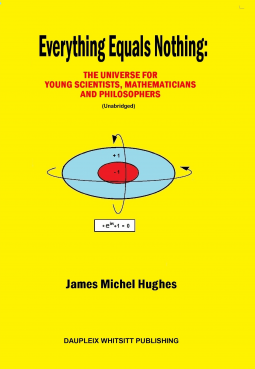
Everything Equals Nothing
The Universe for young scientists, mathematicians and philosophers (Unabridged)
by James Michel Hughes
This title was previously available on NetGalley and is now archived.
Send NetGalley books directly to your Kindle or Kindle app
1
To read on a Kindle or Kindle app, please add kindle@netgalley.com as an approved email address to receive files in your Amazon account. Click here for step-by-step instructions.
2
Also find your Kindle email address within your Amazon account, and enter it here.
Pub Date 26 Jun 2020 | Archive Date 30 Nov 2020
Description
George Gamow, the famous cosmologist and nuclear physicist, conjectured that the Universe may be rotating and this may be the cause of galaxy rotation.
The cosmic microwave radiation echo left over from the Big Bang offers a 'proof' that the nascent Universe was formed having a specific rotational configuration. Strangely, only this rotational configuration could have perfectly separated matter and antimatter in the Big Bang, generating the Universe that exists today - a Universe where both matter and antimatter can co-exist.
Our perceptions of the Universe are inhibited by the relativistic nature of the Universe. However, simple mathematical analysis demonstrates how the Universe was spinning at the beginning of time, at almost Time Zero. This leads to a list of axiomatic conclusions about aspects of such a Universe, including a validation of George Gamow's conjecture.
This book is a serious work which shows that, contrary to expectations, feasible answers to some of the enigmas about the Universe may not necessarily be found in Quantum Physics but that some answers appear, almost from nowhere, by treating the nascent Universe as if it was a mechanical rotating body subject to the Laws of Classical Mechanics, with due regard to Relativity. This is a novel conceptual vision and produces a number of surprises.
From First Principles, and using basic concepts in school physics, a young spinning Universe is mathematically modelled to determine possible behavioural characteristics, with some surprising results. Although assumed for most of the book, the pivotal 'proof' of the nature of the Universe's spinning is not developed until late in the book, as other supporting arguments needed to be developed first.
The conventional image of the Big Bang is that it was a massive uncontrolled explosion. However, the book looks at the possibility that this “explosion” was much more structured than this. That it may have had structured form. That such form was that of a distorted sphere which was spinning at enormous speeds whilst inflating. There is evidence within the cosmic microwave background radiation echo from the Big Bang to support this perspective. This scenario also offers a perfect solution to the enigma of what happened to all the antimatter which 'disappeared' during the Big Bang.
The many illustrations are self-explanatory and complement the intellectual arguments, and the supporting mathematics. However, it should be possible to grasp the conceptual vision solely with reference to the illustrations.
Readers may be intrigued by the novel perspectives portrayed of the Universe. In offering such novel perspectives this book may pose challenges to, at least, one aspect of current orthodoxy.
The author is a Cambridge alumnus, is a Chartered Engineer, and has worked for many years as a practising mechanical engineer.
Available Editions
| EDITION | Paperback |
| ISBN | 9781527262126 |
| PRICE | £19.95 (GBP) |



